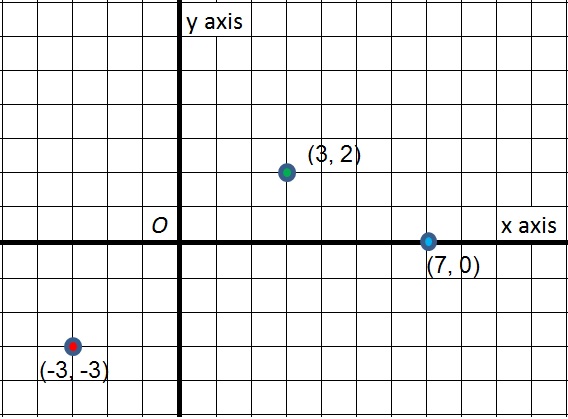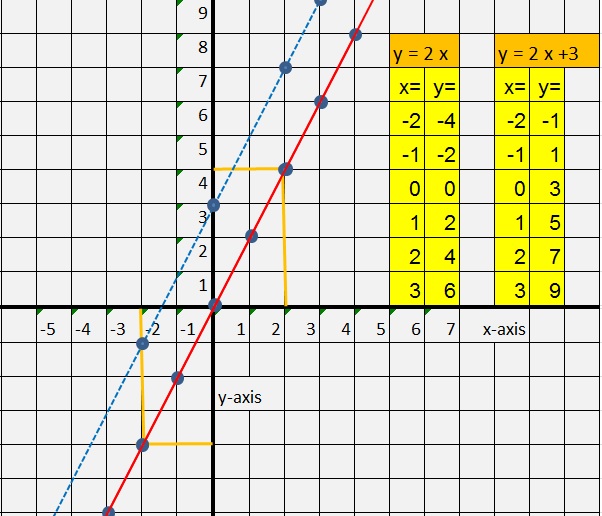
| value of x: | value of y: (which is 2x) |
| x= -2, then | y= -4 (because 2 x -2 = -4) |
| x= -1, then | y= -2 (because 2 x -1 = -2) |
| x= 0, then | y= 0 (because 2 x 0 = 0) |
| x= 1, then | y= 2 (because 2 x 1 = 2) |
| x= 2, then | y= 4 (because 2 x 2 = 4 |


| value of x: | value of y: (which is -3x + 2) |
| x= -2, then | y= 8 (because -3 x -2 + 2 = 6 + 2 = 8) |
| x= -1, then | y= 5 (because -3 x -1 + 2 = 3 + 2 =5) |
| x= 0, then | y= 2 (because -3 x 0 + 2 = 0 + 2 = 2) |
| x= 1, then | y= -1 (because -3 x 1 + 2 = -3 + 2 = -1) |
| x= 2, then | y= -4 (because -3 x 2 + 2 = -6 + 2 = -4 |

